The Beauties of TEFAF 2019: Women as Expression of Sublime
The European Fine Art Fair (TEFAF) in Maastricht has opened its 32nd edition displaying a wide range of masterpieces. The 276 exhibitors spread across the eight sections of the fair, covering 7,000 years of art history: Ancient Art, Antiques, Design, La Haute Joaillerie, Modern art, Paintings, Paper and Tribal art.
Among the outstanding artworks showcased, is interesting to highlight several paintings focused on the image of the woman, ranging from the idealized depictions of the Renaissance art to the provocative representations executed by the contemporary artists. These artworks show us a perspective on the concept of feminine beauty, and of the woman itself, that remarkably changed through the ages.
Here an exquisite selection of the beauties of TEFAF, from the 16th century to the present day:

Hendrick de Clerk, The Judgement of Paris
Galerie Sanct Lucas, Vienna, Austria
The mythological story of the Judgment of Paris during the Renaissance allowed many artists to display the ideal of female beauty. This myth shows the first ever beauty pageant. The shepherd Paris had to choose which goddess was the most beautiful: Juno, Minerva or Venus. He chose Venus, thereby unleashing the Trojan War. The story could be also interpreted as a moral allegory: the choice between the vita contemplativa represented by Minerva, the vita activa represented by Juno, and the vita voluptaria represented by Venus; Paris's misguided choice may have served as a warning to the viewer against Venus's power and sensual pleasures. The three goddesses depicted by the Flemish painter Hendrick de Clerk perfectly reflect the beauty standards of the Renaissance: gracefulness, harmonious proportions and unblemished pale skin.
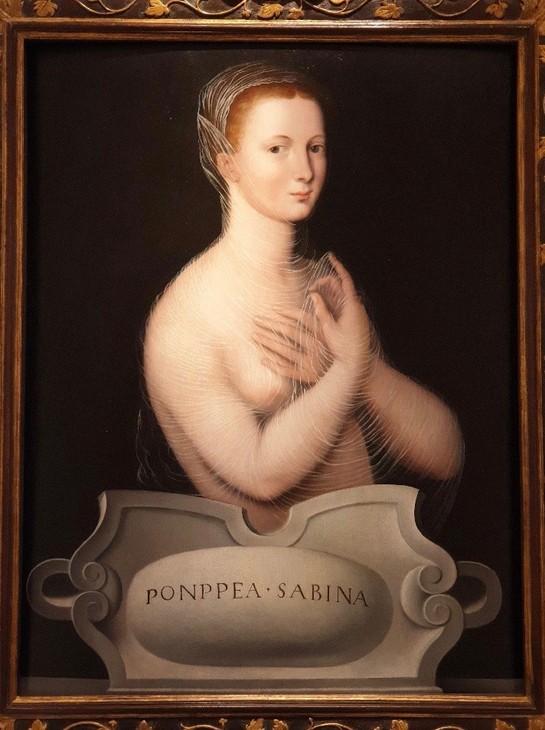
School of Fontainebleau, Portrait of Poppea Sabina, 1550-1570
Tomasso Brothers Fine Art, London, UK
In this high-quality painting is portrayed Poppea Sabina, the mistress and second wife of the Roman emperor Nero. According to the stories told of her, Poppea had urged Nero to kill his mother, Agrippina the Younger, and to divorce and later murder his first wife, Octavia. The historians of antiquity describe her as a seductive woman that used her beauty and sexuality as a way of gaining power and prestige. According to Tacitus (Annales XIII), “her public appearances were few; she would half-veil her face at them, to stimulate curiosity (or because it suited her)”. The anonymous master artist of the School of Fontainebleau did not omit the veil, but it hides nothing. The transparent drapery enhances the beautiful pale complexion and the graceful body of the Empress Poppea, conveying a sense of mystery and seduction.
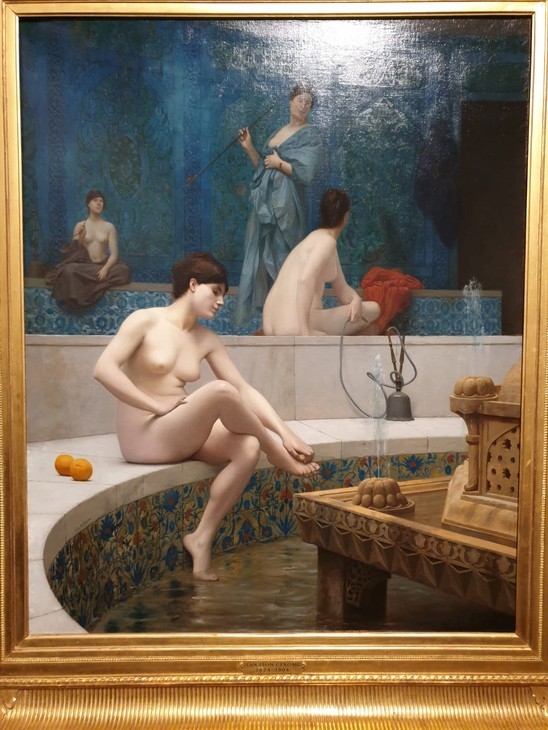
Jean-Léon Gérôme, Les Baigneuses du Harem, 1901
Dickinson, London, UK
In this painting, Gérôme portrays a group of sensual women in the setting of the Turkish Bath. It provided the perfect pretext for exploring the female form and the effect of the light on women’s delicate white skin. In creating this artwork in the late 19th century, he observed a number of norms surrounding the depiction of the female nude form: observance of a classical style, the use of an Oriental context to create a sense of cultural or societal distance, and ideal renderings and sensible positioning of women.
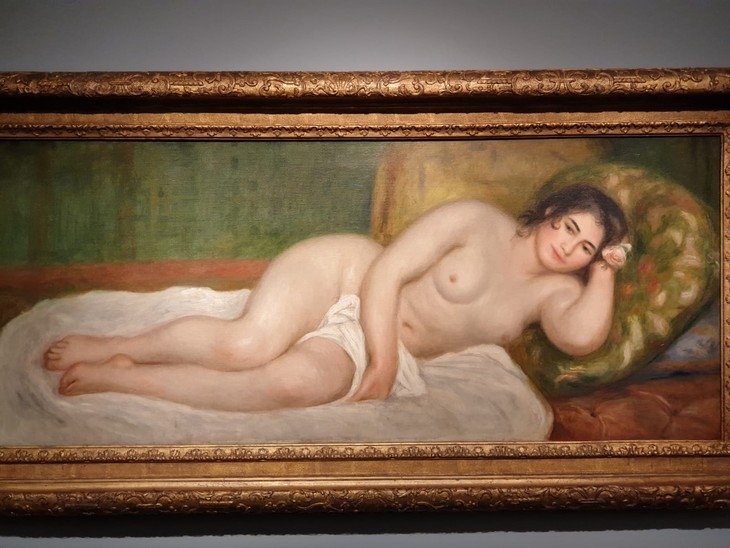
Pierre-Auguste Renoir, Femme nue couchée (Gabrielle), 1903
Dickinson, London, UK
Near the mid and latter end of the 19th century, the portrayal of female nudity become more provocative and not limited to mythological or oriental subjects. The woman represented in this painting by Renoir is not a nymph or a goddess: she is just a modern Parisian woman. This work uses a motif that was recurrent in the Renaissance period, a nude woman reclining, and recalls the work of Titian very closely, but reinterpreted by a modern point of view.
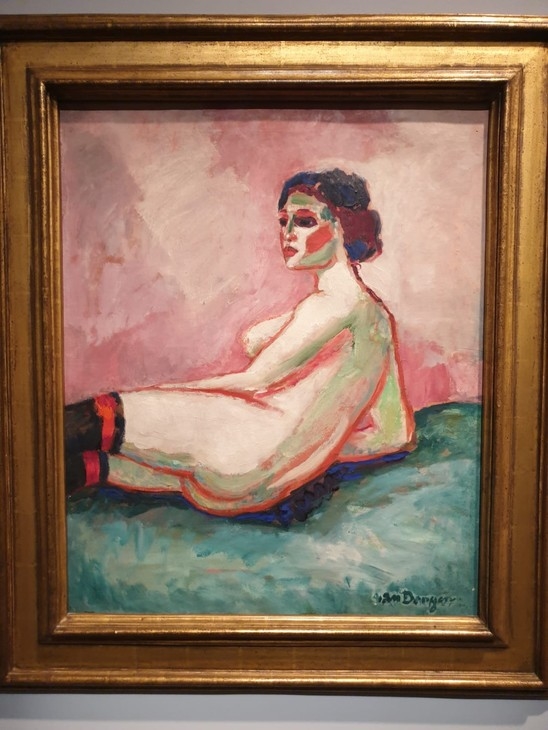
Kees van Dongen, Nu fauve à la Jarretière rouge, 1905-07
Dickinson, London, UK
Kees van Dongen was a Dutch-French artist known for his vibrant paintings and prints of almond-eyed women and bourgeois leisure scenes. This painting is another variation of the classical motif of the reclining nude. The woman is depicted with unashamed voyeurism in the Fauvist style, which is freer and more abstract, with an expressive pallet of vibrant and unnatural colors.
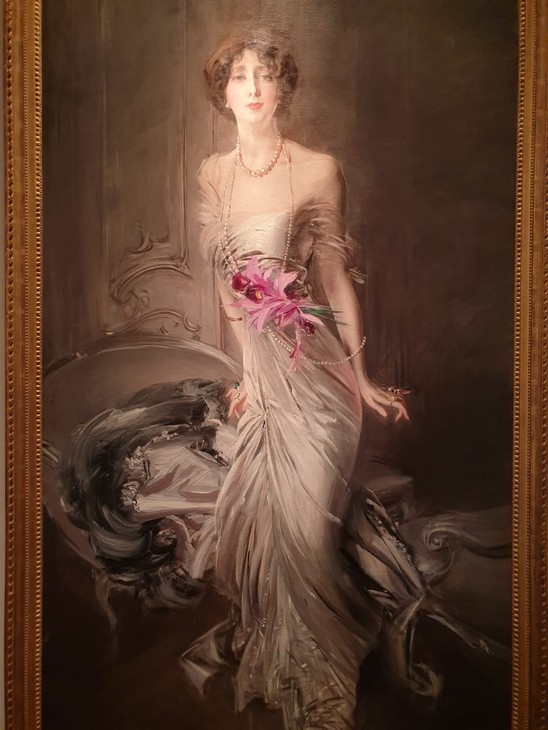
Giovanni Boldini, Portrait of Madame Eugène Doyen, 1910
Robilant + Voena, London, UK
The perfect beauty of Belle Époque ladies relives in Boldini’s portraits. His elegant women, drawn with flexible and colorful strokes, are iconic and sublimate the high fashion of that time. In this painting, Boldini portrayed the wife of the celebrated Parisian surgeon, Dr. Eugène Louis Doyen, whose private medical institute attracted a wealthy clientele. The outer beauty of the woman is combined with a thorough investigation of the human soul: the sinuous curves and vibrant strokes seem to unveil the most intimate and mysterious essence of the noble lady, conveying her a sensual energy.

Schiele Egon, Reclining nude masturbating, 1914
W&K Wienerroither Kohlbacher, Vienna, Austria
Going in the early 20th century, the portrayal of women’s bodies in art was constantly evolving. The expressionist artist Egon Schiele painted the most radicals nudes of art history, like this technically exquisite and sexually explicit depiction of a reclining woman, showing her plump and contorted nude body in an erotic pose. While masturbating women have already been subject to several artists, Schiele is the first to implement Cubism in his drawings. They are unique in their style, defined by angularity, unconventional beauty and social taboo that both entices and repels the viewer. By highlighting female sexuality and expressing his deepest thoughts through female anatomy, Schiele also reveals his ardent desire for women.
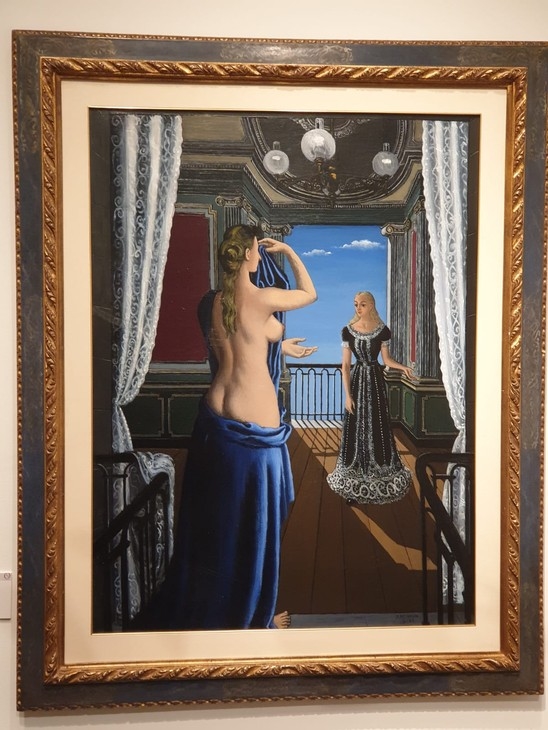
Paul Delvaux, Le Balcon, 1948
Dickinson, London, UK
Delvaux particularly depicted nude or partially clothed women often in classical or city landscapes. In this painting, the semi-naked body of the woman in the foreground and the view from the window that conveys the impression that the room is suspended in the sky, are unmistakable features of the art of this Belgian painter. With a sense of theater, he evokes strange atmospheres in a metaphysical world. Although the exact meaning of his allegories remains ambiguous, they all seem to touch on such enduring themes as love and erotic fantasy.
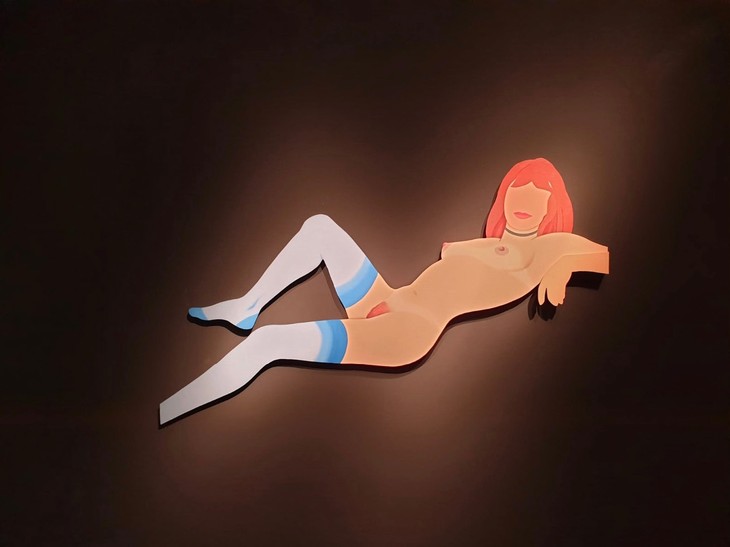
Tom Wesselmann, Reclining Stockinged Nude, 1982
Van de Weghe, New York, US
The classical female nude is reduced to her essential and sexual components in Tom Wesselmann's artworks. He was one of the leading American Pop artists of the 1960s, that became famous for his series of works titled Great American Nude. In this piece Wesselmann brilliantly combines the classical representations of the reclining nude with the minimalism and the contemporary artifice of popular culture, pioneering the iconic paradigm of assemblage art and Pop Art. He was also deeply influenced by Matisse’s bright colors and Egon Schiele’s erotic drawings. The result is a powerfully sensual and exuberant image of a woman, reflecting the “sexual revolution” of the 1960s.
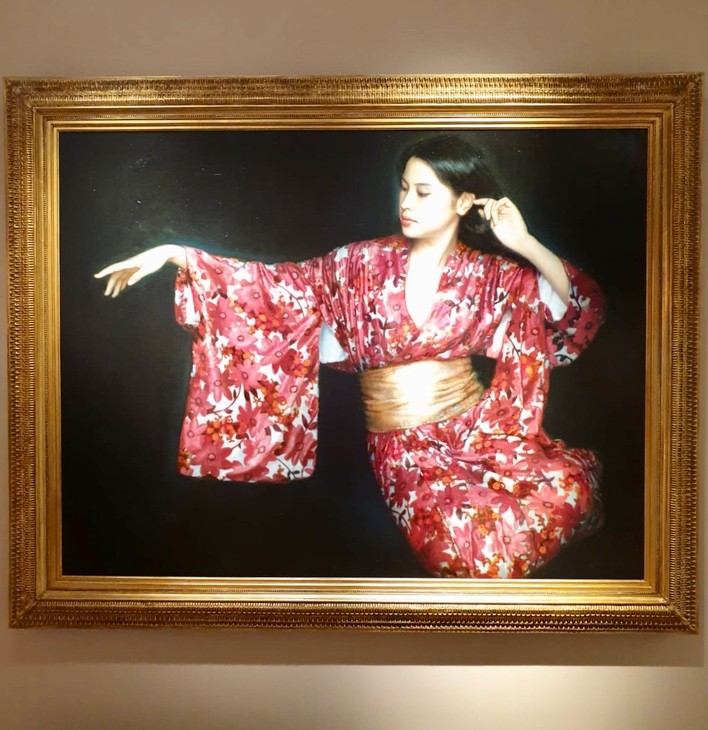
Chen Yifei, The Red Kimono, 1985
Hammer Galleries, New York, US
In his oil paintings, Chen Yifei abandoned his uncritical glorification of the party to blend realistic technique and romanticism with Chinese subject matter, especially melancholic and lonely women in traditional dresses, depicted with instruments or other beautifying objects. His characteristic "Romantic Realism" paintings use dark and dense colors and convey a sense of richness and integrity. This is a portrait of a beautiful Chinese woman in traditional clothes, depicted in a melancholic and distant attitude on a dark background. Chen Yifei’s lovely women perfectly reflect the charm of ancient oriental beauties.
Find beautiful classic & modern art for sale at auction on Lot-Art.com!
The LOT-ARTeam
LOT-ART | The Art Investment Platform
Other interesting articles
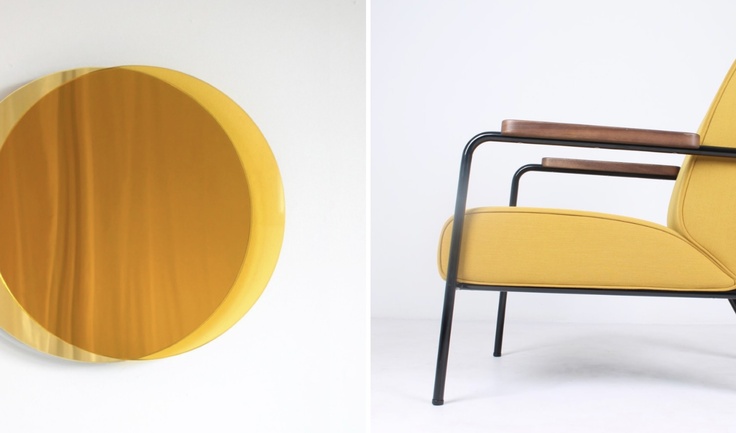
|
Wed Apr 24 2024
Masterly x Catawiki: "Homage" Collection | Exclusive DesignFor the installation at Salone del Mobile 2024, Catawiki and Masterly commissioned contemporary creators to reinterpret design icons. The auction "Homage" - A Tribute in Auction on April 28th is curated by Masterly founder, Nicole Uniquole, and includes the world-famous Eames Lounge Chair reimagined by Stefan Scholten. An auction inspired by the installation at Salone... |
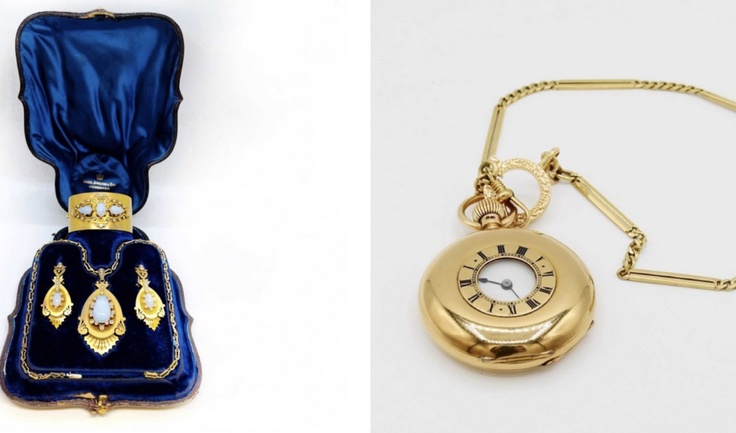
|
Tue Apr 23 2024
A Selection of Jewelry at Casa d'Aste Guidoriccio, ItalyCasa d'Aste Guidoriccio, Italy presents the Auction: "Jewels. A Selection of Jewelry and Precious from Private Collections" on April 30th. Discover the Auction Highlights or browse the full catalogues here » SELECTED LOTS LEFT: Platinum and Diamond Ring, Fabergé Victor Mayer Collection. Diamonds totalling 0.78 ct. Limited series 11/100. See Price Estimate... RIGHT: 750... |
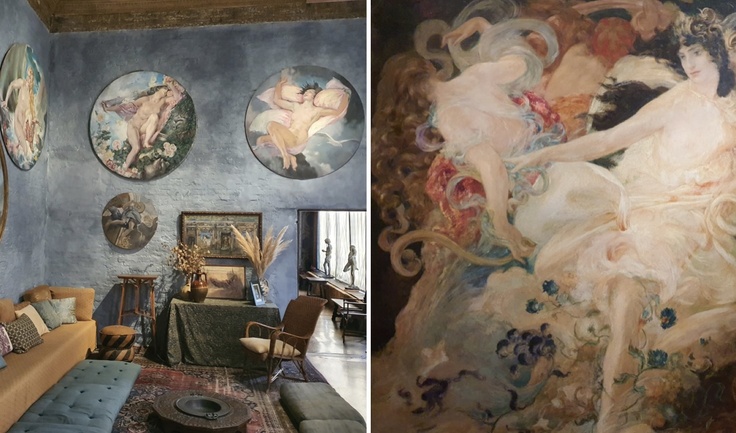
|
Mon Apr 22 2024
Enchantment at Palazzo Fortuny: 'Selva' by Eva Jospin in VeniceLEFT: Photograph of the Mariano Fortuny Y Madrazo Museum; RIGHT: Wagnerian Cycle. Parsifal. The Flower Maidens, Mariano Fortuny y Madrazo, 1896 Mariano Fortuny y Madrazo, born in Granada in 1871, was a renowned Spanish artist celebrated for his innovative contributions in the realms of fashion, photography, and lighting design. Fortuny gained global fame for the... |
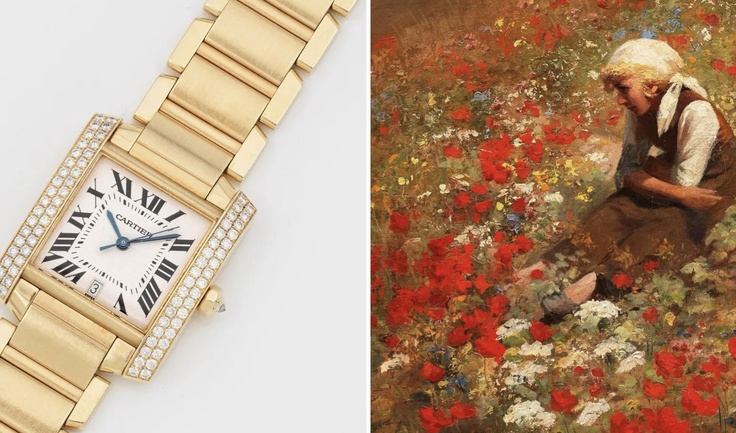
|
Sat Apr 20 2024
International Art at Schloss Ahlden, GermanySchloss Ahlden, Germany presents the 190th International Art Auction in four parts: Part I on 27 April Part II on 28 April Part III on 3 May Part IV on 4 May Discover the Auction Highlights or browse the full catalogues here » SELECTED LOTS LEFT: Lovis Corinth (1858 - 1925) - "Pair of Centaurs" Oil on canvas, laid down on canvas. Signed and dated 1917. See Date & Price... |